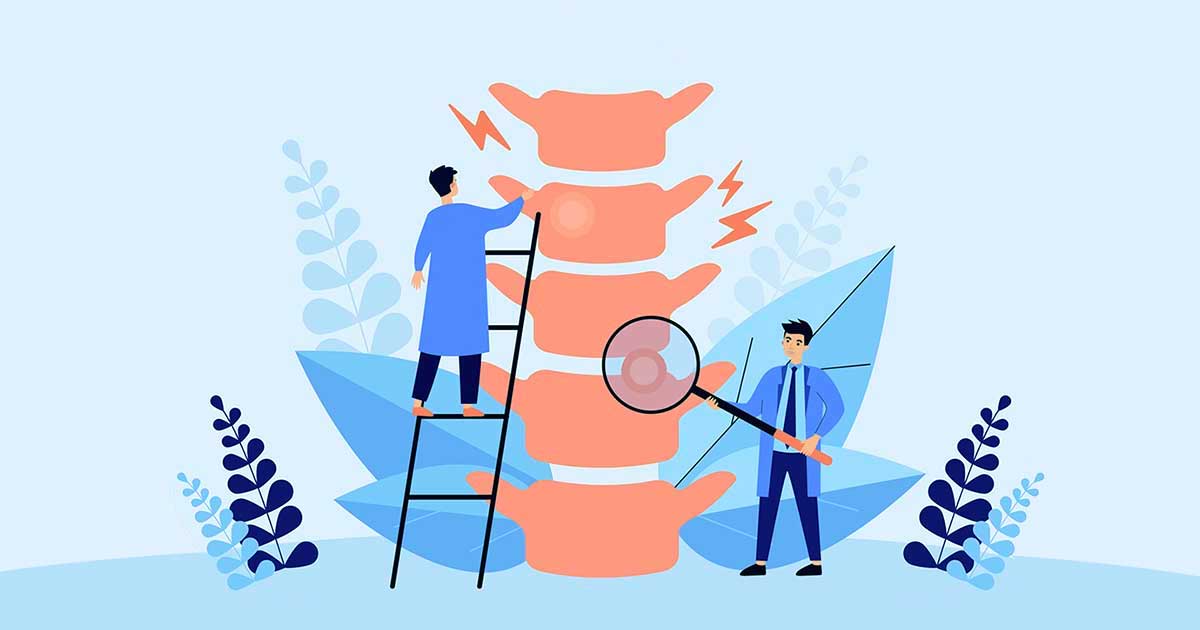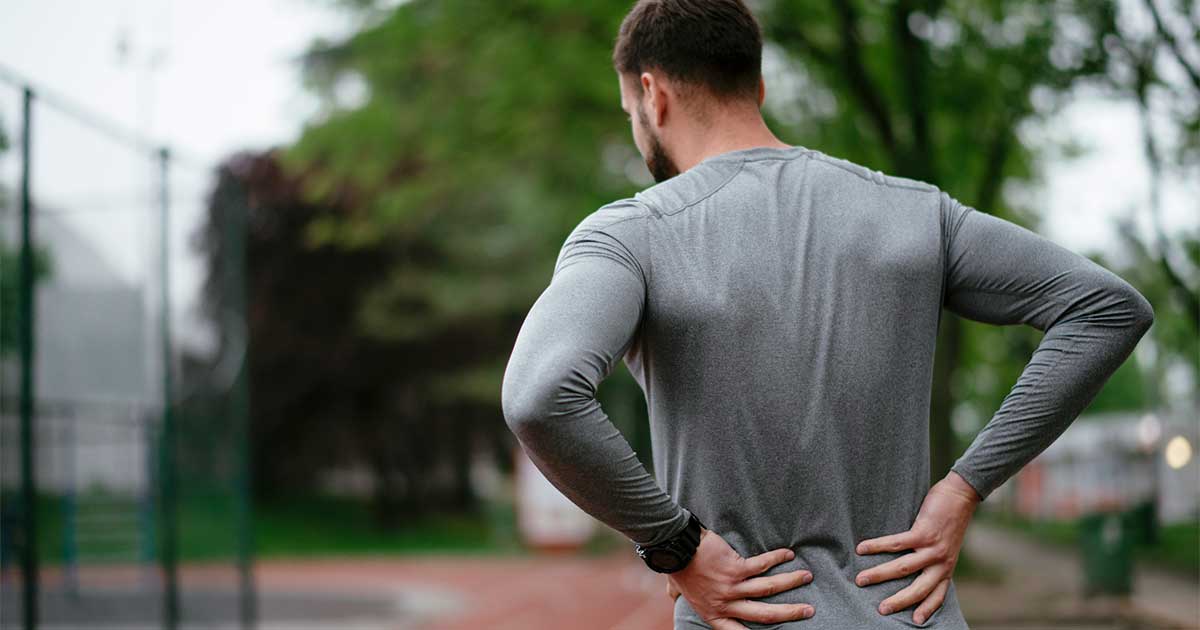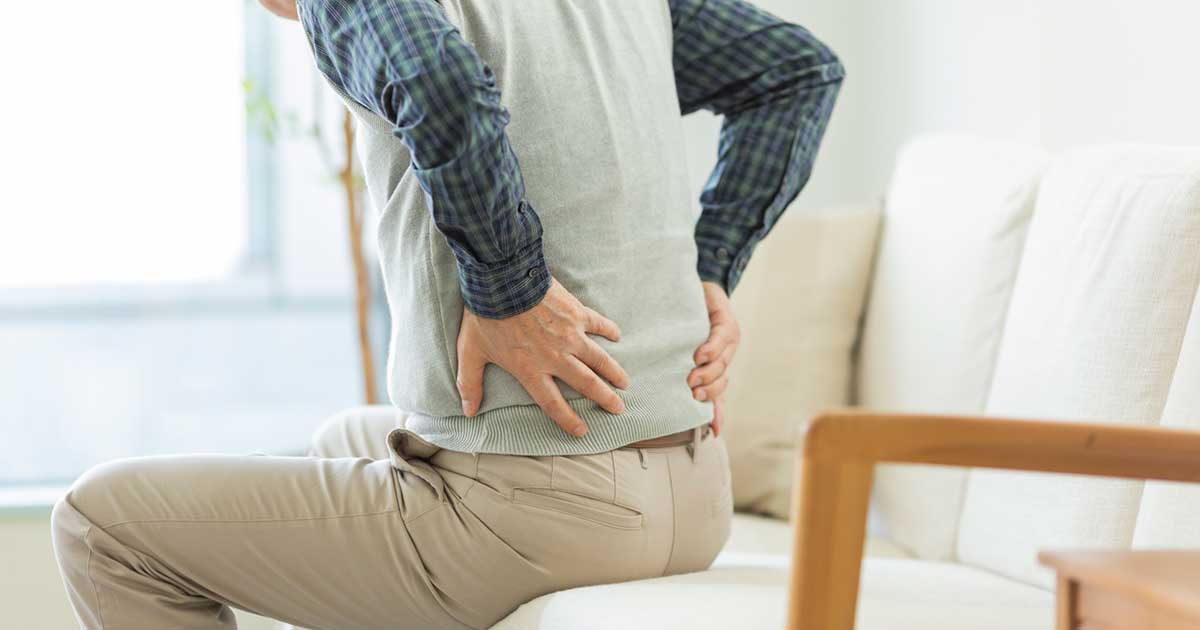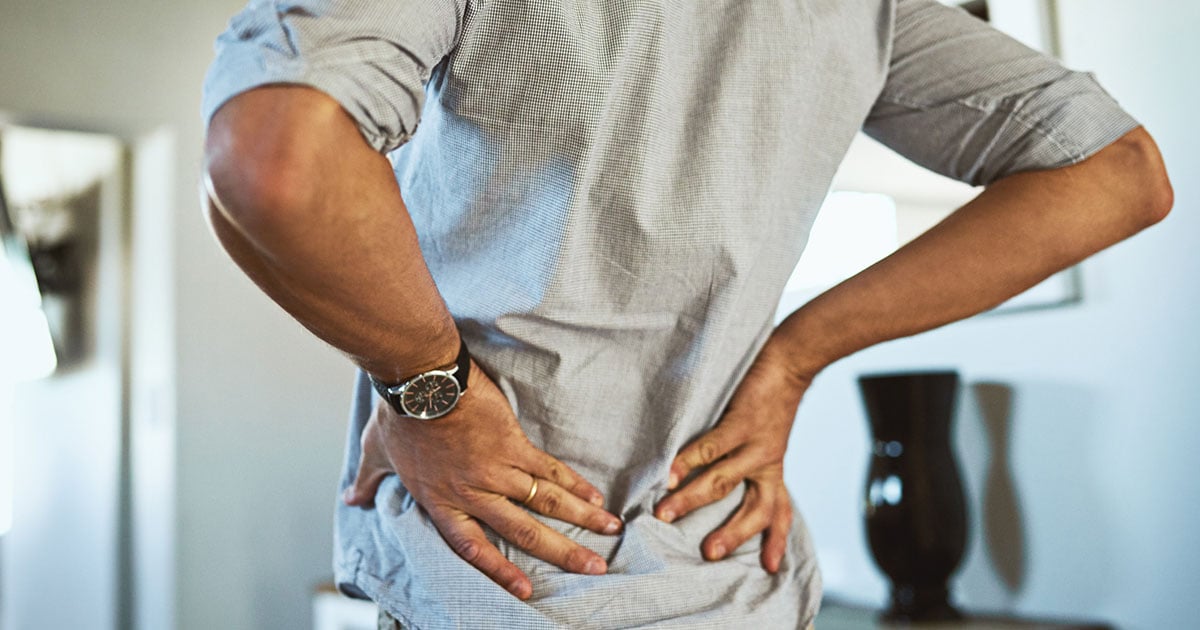
Advice to improve your movement, fitness, and overall health from the #1 in orthopedics in the U.S.
6 Things to Know about Slipped Discs in the Lower Back
Think you might have a slipped disc? Find out more about symptoms, risks and treatments.
Advice to improve your movement, fitness, and overall health from the #1 in orthopedics in the U.S.
Herniated, or slipped, discs in the lower back (called the lumbar spine area) are relatively common, especially for people in middle age. But you may be surprised by some of the symptoms. According to HSS spine surgeon James E. Dowdell III, MD, this condition is more likely to affect the buttocks, legs and feet than the back. The good news is that herniated discs are easily treatable most of the time, and you can take steps to prevent them from happening in the first place.

1. A slipped “disc” doesn’t actually slide anywhere.
The tissue that we call the disc is the cushioning material between the bones of the spinal column, or vertebrae. It’s made up of a ring of tough collagen that surrounds a jelly-like substance called the nucleus pulposus. If there is a break in that outer ring, some of the jelly-like substance can escape and compress a nerve.
2. It’s more common to feel pain from a slipped disc in other parts of the body than the back.
A herniated disc in the lower back sometimes causes pain at the site of the actual rupture. But more commonly it causes pain, weakness and numbness in the buttocks, legs or feet. That’s because it’s pressing on the nerve that connects to those areas. “This leg pain—often described as sharp, stabbing or burning—is typically the driving factor that brings people to see me,” Dr. Dowdell says. “What many people describe as ‘sciatic pain’ is often caused by a herniated disc.”
When you have a herniated disc that’s pressing on a specific nerve, there is a telltale way you feel the pain. “I can usually figure out which disc is slipped just by a patient’s description of where their pain and weakness are located,” he says.
3. Smoking raises your risk for a slipped disc.
The number-one risk factor for developing a herniated disc is being a smoker. Smoking can make the outer ring and the nucleus pulposus break down.
It’s more common to have larger herniations when you’re younger, because younger people have more material in the spine. But it can happen at any age.
There are some genetic factors that make certain people more likely to slip a disc, but most often when it occurs, it’s random. “It could happen while playing basketball or football, or it could happen just bending over to pick something up,” Dr. Dowdell says. “Every activity that we do as humans puts our spines at risk, so it's a very common thing to happen.”
4. To prevent a slipped disc, work on your core.
The best way to protect yourself from developing a herniated disc is to build strong core muscles—though how you go about doing that is important. Twisting or bending core exercises, such as Russian twists and bicycle crunches, can actually put your spine at risk if they’re not done carefully. However, isometric core work, especially planks, help strengthen the muscles that support the spine.
5. Slipped discs usually resolve on their own, but physical therapy or other medications can help with pain.
The majority of disc herniations improve on their own within six weeks to three months, as the body releases enzymes to clear away the herniated piece and the pressure on the nerves goes away. “But if the pain is severe enough that it’s really bothering you, the first step would be going to either your primary care doctor or a physiatrist—a sports medicine doctor who specializes in rehabilitation,” Dr. Dowdell says.
If the doctor diagnoses a herniated disc, they can prescribe physical therapy. Anti-inflammatories like ibuprofen can help relieve some of the pain and swelling.
If physical therapy and anti-inflammatories are not enough, the next step would be a steroid injection in the affected area of the spine. The injection does not heal the injury, but it calms the inflammation of the nerve while the body is naturally repairing the disc herniation.
“But if that doesn't work and the pain is so severe that you can’t sleep or carry out your regular daily activities, then you could consider surgery,” Dr. Dowdell says.
6. Surgery for a slipped disc is an option.
During surgery for a herniated disc, the surgeon removes the herniated fragment that’s near the nerve. This can be done with an open surgery or minimally invasively.
“I do a minimally invasive procedure called a tubular microdiscectomy,” Dr. Dowdell says. “Afterward, you have about two weeks where your back is sore from the surgery itself, and for the first six weeks your mobility is limited. You want to avoid things like bending or twisting at the waist or lifting anything that weighs more than 10 pounds.” Some lingering symptoms like leg pain may remain for up to three months after the surgery, but once you’re completely healed, the pain should be gone.
The risk of reinjuring the same disc is very low, though people who have had one herniated disc have a slightly increased chance of having another one.
Published 3/7/2022


